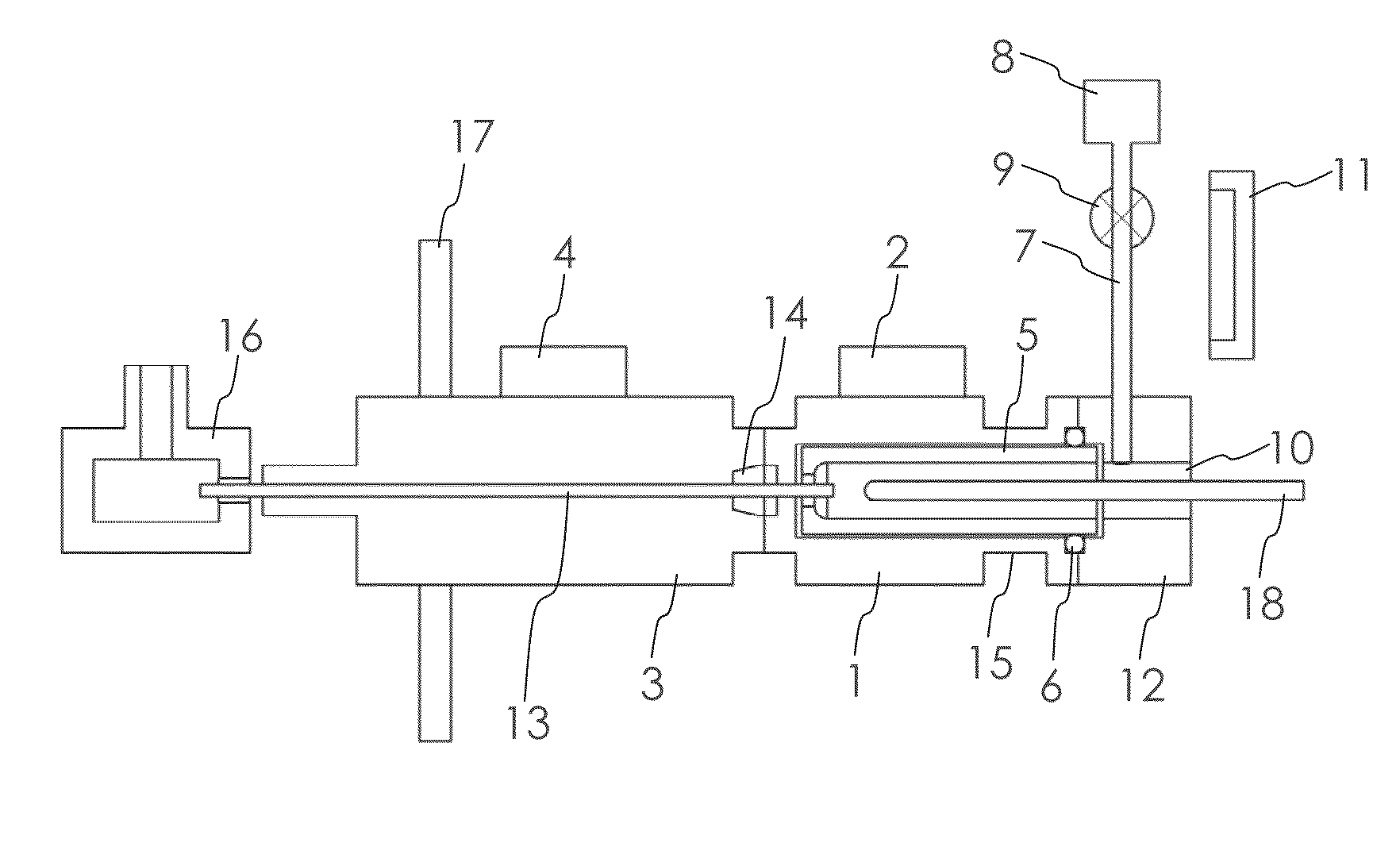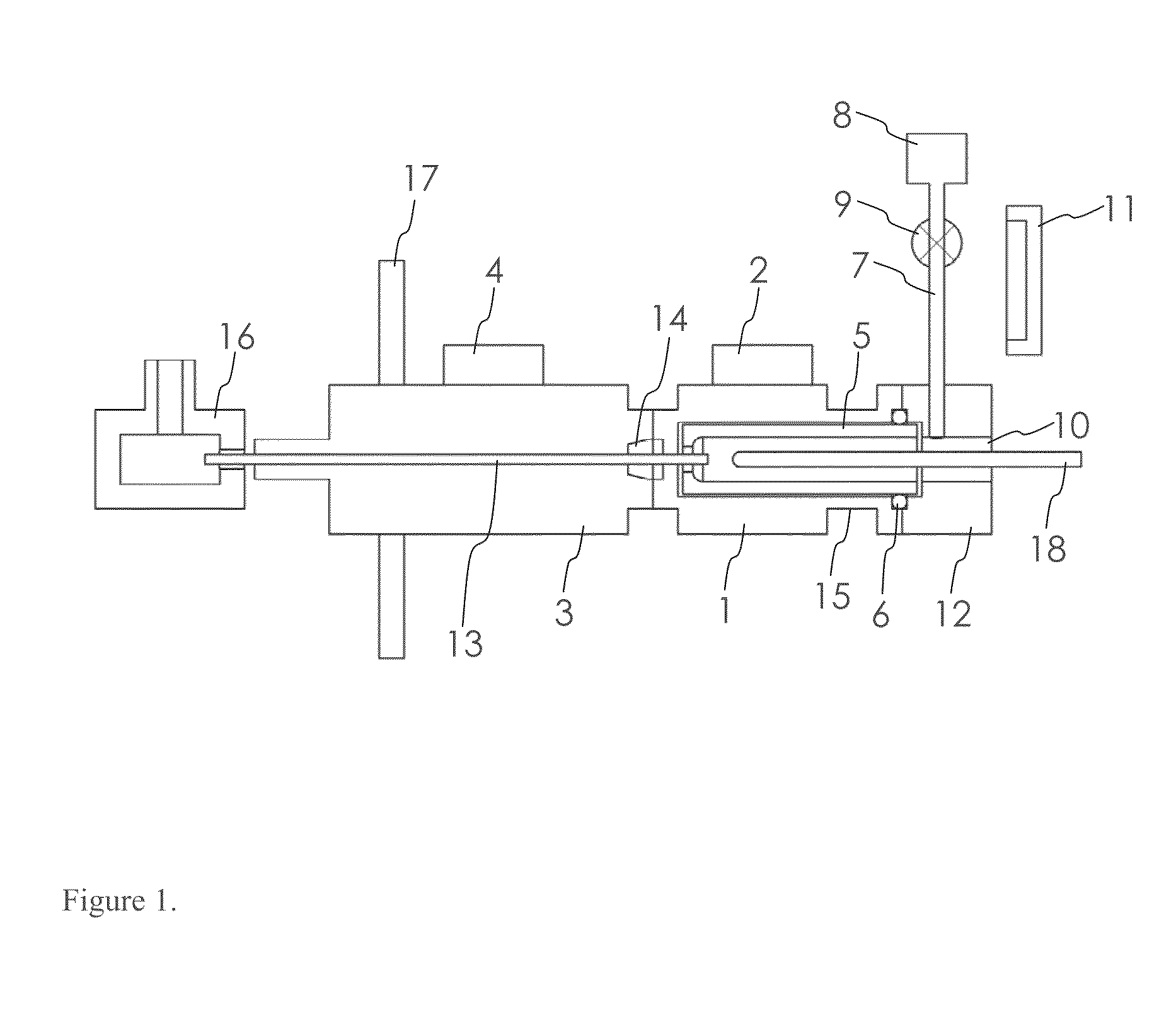Open probe method and device for sample introduction for mass spectrometry analysis
- Summary
- Abstract
- Description
- Claims
- Application Information
AI Technical Summary
Benefits of technology
Problems solved by technology
Method used
Image
Examples
example
[0046]Reference is now made to FIG. 8, in which typical results of an experiment using the present invention are presented. In contrast to standard MS probes that are operated with constant sample flux, the preferred mode of open probe operation is by generation of fast pulses of sample introduction that are characterized by fast sample flux rise and fall, as demonstrated in FIG. 8. This signal pulse is the result of isothermal open probe oven operation, the use of low thermal mass sample holders, sampling with limited sub microgram sample amounts, the use of high open probe helium flow rate relative to its volume and the open probe fast manual sample introduction (and removal) without sealing. In fact, the open probe is designed specifically to enable short analysis cycles and as a result it should preferably work with a hot isothermal oven without temperature programming. In this case, the sample is quickly introduced into the open probe oven since it is open and no seal must be r...
PUM
 Login to View More
Login to View More Abstract
Description
Claims
Application Information
 Login to View More
Login to View More - R&D
- Intellectual Property
- Life Sciences
- Materials
- Tech Scout
- Unparalleled Data Quality
- Higher Quality Content
- 60% Fewer Hallucinations
Browse by: Latest US Patents, China's latest patents, Technical Efficacy Thesaurus, Application Domain, Technology Topic, Popular Technical Reports.
© 2025 PatSnap. All rights reserved.Legal|Privacy policy|Modern Slavery Act Transparency Statement|Sitemap|About US| Contact US: help@patsnap.com



